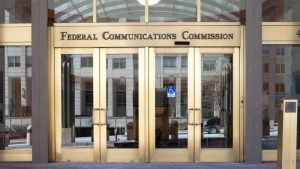The Federal Communications Commission (FCC) received a mostly favorable review from the Government Accountability Office (GAO) on how the agency is proceeding with improving broadband service access maps, but GAO also flagged that the FCC will face technological challenges with integrating disparate sources of broadband service location data.
With the rise in distance learning, the 2020 school year highlighted the need for in-home Internet access for K-12 students nationwide. New research from the National Center for Education Statistics found that household internet access for K-12 students is closely tied to household socioeconomic status.
In a push to harden its campus-wide cybersecurity posture, Virginia Polytechnic Institute and State University (Virginia Tech) has released a new university security standard for administrative privileges.
As the COVID-19 pandemic lingers on, California Governor Gavin Newsom signed an executive order (EO) extending a prior EO that expanded access to telehealth services statewide.
State and local government (SLG) leaders are struggling to get a good night’s sleep amid growing cybersecurity fears, according to a new report from MeriTalk.
In a bid to improve emergency communications in New York State, Gov. Kathy Hochul pledged $45 million in state funding to improve the operability of emergency communications statewide.
Sen. Gary Peters, D-Mich., chairman of the Senate Committee on Homeland Security and Governmental Affairs, and Sen. Rob Portman, R-Ohio, the committee’s ranking member, have introduced legislation to require critical infrastructure entities to report cyberattacks to the Federal government, and to require most other entities to report to the government if they make a ransomware payment.
The FCC has announced a second set of awards for round two of its COVID-19 telehealth program, totaling more than $41.11 million to healthcare providers.
State and local governments are on the front lines of delivering services and restoring trust in government. Data from a new survey report by Deloitte provides insight into driving perceptions of trust in state and local government functions.
The National Association of State Chief Information Officers (NASCIO) released a new primer on states using low-code and no-code software. The primer, titled the Need for Speed: Why State CIOs are Turning to Low-Code and No-Code Software Development, is based on extensive interviews with state CIOs and NASCIO private sector members. In the primer, NASCIO outlines a handful of use cases, the upsides, the downsides, and strategies for success in using low-code and no-code software.














